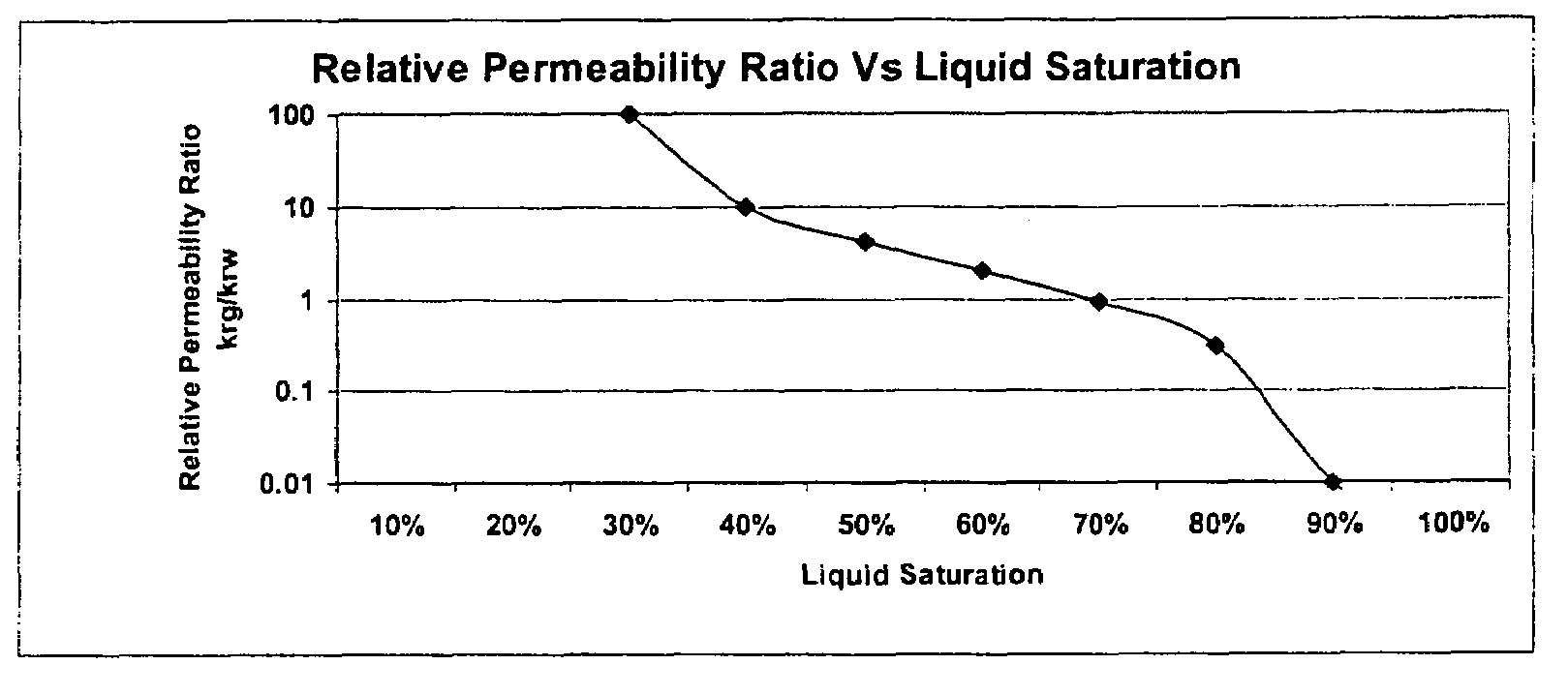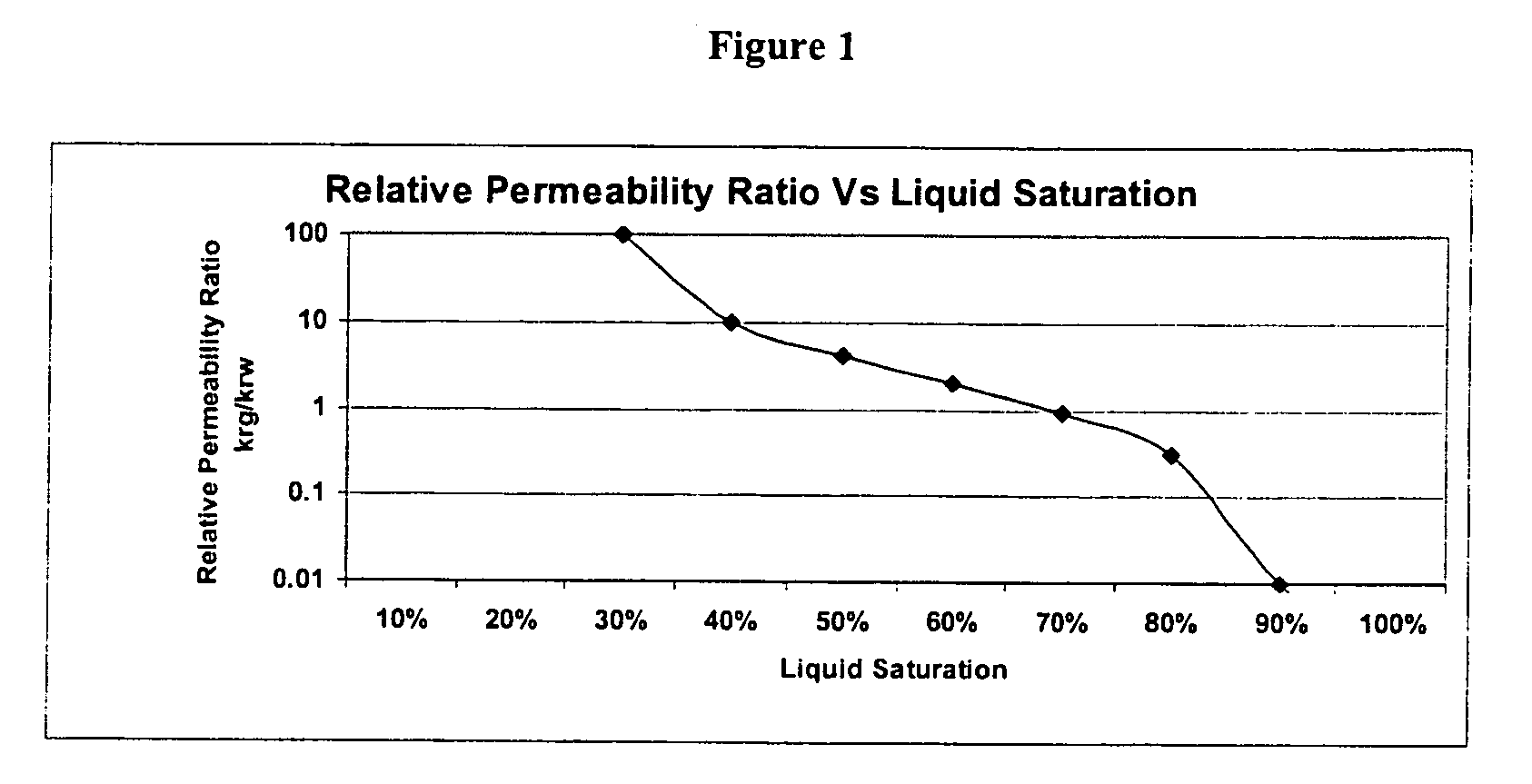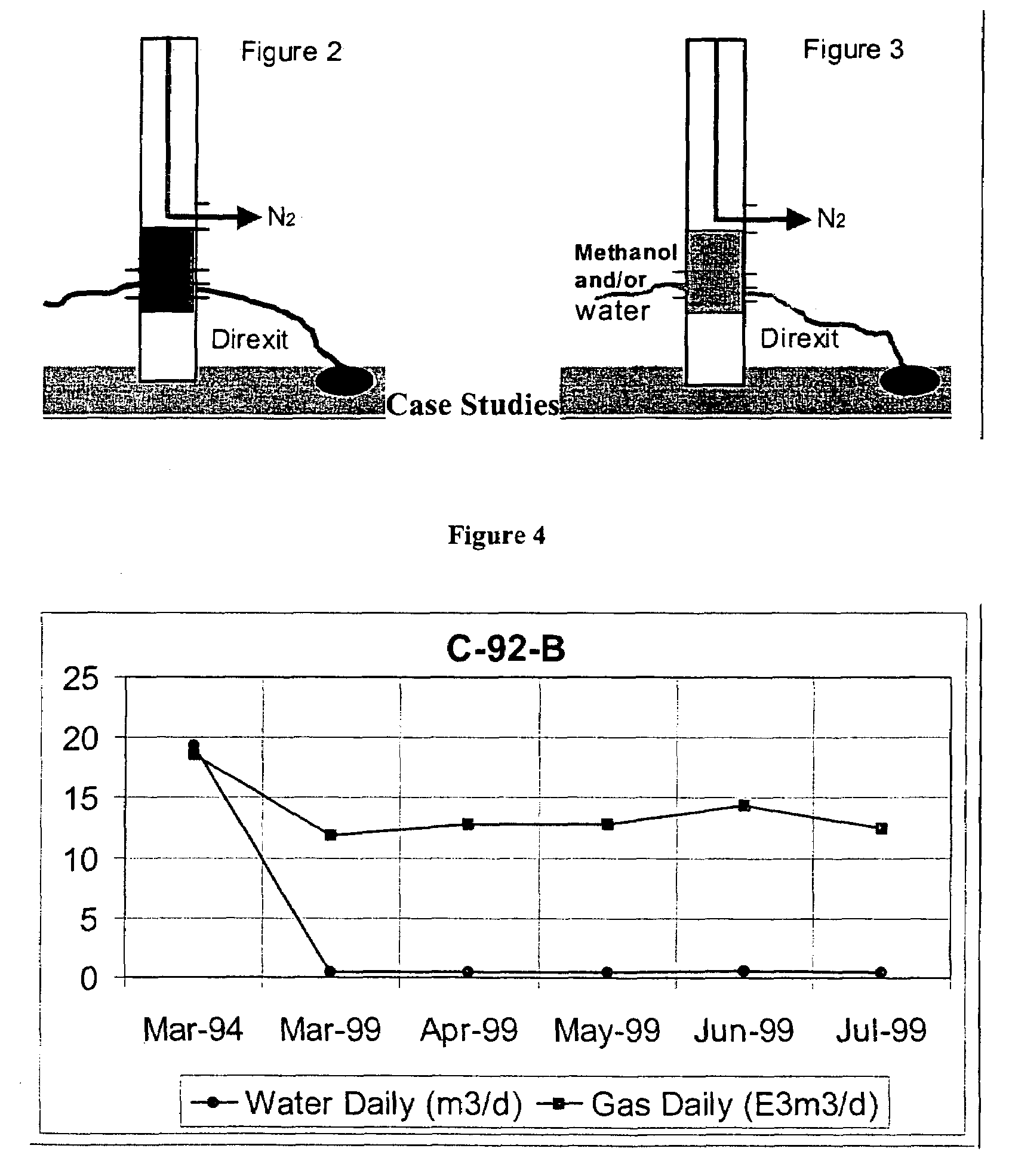Method for terminating or reducing water flow in a subterranean formation
a subterranean formation and water flow technology, applied in the direction of fluid removal, survey, drilling composition, etc., can solve the problems of severe disruption or in fact termination of the desired operation of the well, well being shut down, and deleterious effects of water production, so as to reduce or shut off water production, maintain gas and oil permeability and potentially improve the effect of permeability and low initial viscosity
- Summary
- Abstract
- Description
- Claims
- Application Information
AI Technical Summary
Benefits of technology
Problems solved by technology
Method used
Image
Examples
first embodiment
[0052]Although the foregoing description has proceeded with respect to the use of the aqueous polymer DIREXT™, it will be understood that a polymeric material may be used comprising a polymeric material which is at least partially formed from a 1,2-substituted ethene compound, for example a susbtituted styrylpyridinium compound, as disclosed in aforementioned U.K. Patent Application Serial No. 96 194 19.6 and published Canadian Patent Application Serial No. 2,266,578. a first polymeric compound comprises a compound of general formula
[0053]
[0054]or a salt thereof where A and B are the same or different and at least one comprises a polar atom or group and R1 and R2 independently comprise non-polar atoms or groups, in a solvent of a type in which ethene itself is generally insoluble and causing the groups C—C in said compound to react with one another to form a polymeric structure.
[0055]Preferably, R1 and R2 are independently selected from a hydrogen atom or an optionally substituted, ...
second embodiment
[0061]a first polymeric compound comprises a compound of general formula II
[0062]
wherein A, B, R1 and R2 are as described above and n in an integer.
[0063]A first or second embodiment of a first polymeric compound of general formula I or II in a solvent can be infinitely mixed with a second polymeric compound which contains one or more functional groups capable of reacting with said first polymeric compound, preferably in an acid catalysed reaction. Said reaction is preferably a condensation reaction. Preferably, said second polymeric compound includes a functional group selected from an alcohol, carboxylic acid, carboxylic acid derivative, for example, an ester, and an amine group. Preferred second polymeric compounds include optionally substituted, preferably unsubstituted, polyvinylalcohol, polyvinylacetate, polyalkylene glycols, for example poolypropylene glycol, and collagen (and any component thereof).
[0064]The ratio of the wt % of said first polymeric compound to the wt % of s...
PUM
| Property | Measurement | Unit |
|---|---|---|
| wt % | aaaaa | aaaaa |
| specific gravity | aaaaa | aaaaa |
| interfacial tension | aaaaa | aaaaa |
Abstract
Description
Claims
Application Information
 Login to View More
Login to View More - R&D
- Intellectual Property
- Life Sciences
- Materials
- Tech Scout
- Unparalleled Data Quality
- Higher Quality Content
- 60% Fewer Hallucinations
Browse by: Latest US Patents, China's latest patents, Technical Efficacy Thesaurus, Application Domain, Technology Topic, Popular Technical Reports.
© 2025 PatSnap. All rights reserved.Legal|Privacy policy|Modern Slavery Act Transparency Statement|Sitemap|About US| Contact US: help@patsnap.com



